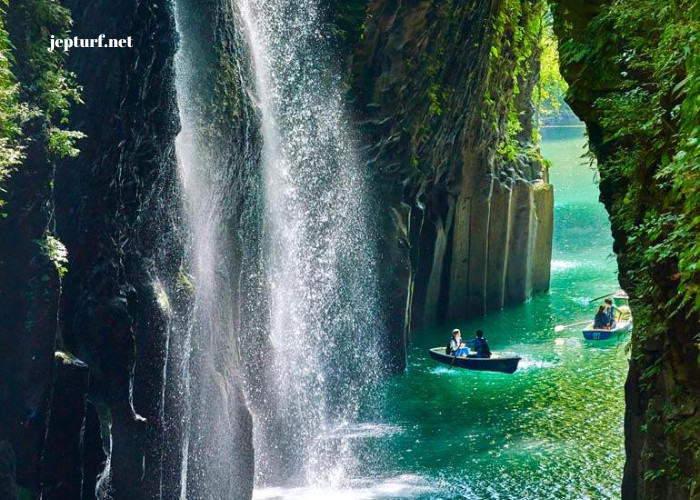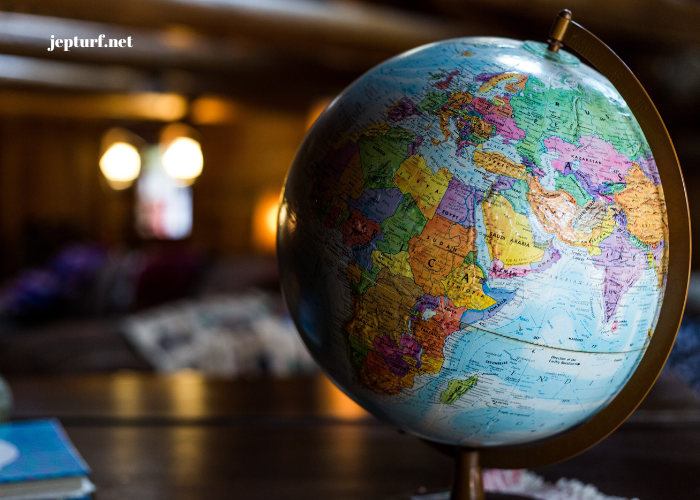The urge to explore has been an intrinsic part of human nature since time immemorial. From the ancient Silk Road traders to the intrepid European explorers of the Age of Discovery, humans have sought to transcend geographical boundaries in search of new horizons. In the modern era, this spirit of exploration endures, albeit in a different form. Today, voyages beyond borders take on a new meaning, as adventurers seek not only to discover new lands but also to unearth the hidden treasures that lie within them. In this article, we embark on a journey of exploration, delving into the world’s hidden treasures, both natural and cultural, that beckon intrepid travelers.
Nature’s Hidden Gems
The Amazon Rainforest: Earth’s Green Lungs
The Amazon Rainforest, often referred to as the “lungs of the Earth,” is a natural wonder that spans nine South American countries. Its sheer size is awe-inspiring, covering an area roughly equivalent to the United States. Beneath its lush canopy resides an astonishing array of biodiversity, with countless species of plants, animals, and insects that are still being discovered by scientists.
One of the most remarkable hidden treasures within the Amazon is the “lost city” of Ciudad Perdida, a pre-Columbian archaeological site in Colombia. Nestled deep within the jungle, this ancient city was built by the Tairona people around the 9th century but remained hidden from the world until its rediscovery in the 1970s. Ciudad Perdida offers a glimpse into the advanced civilization that thrived in the heart of the rainforest long before the arrival of Europeans.
Madagascar: A Biodiversity Hotspot
Madagascar, an island nation off the coast of Africa, is a haven for biodiversity like no other. Approximately 90% of the species found in Madagascar are endemic, meaning they exist nowhere else on Earth. This isolated island has acted as a crucible for evolution, resulting in unique and extraordinary flora and fauna.
One of Madagascar’s hidden treasures is the Avenue of the Baobabs, a surreal landscape dotted with massive baobab trees. These ancient giants, some of which are over a thousand years old, create an otherworldly atmosphere as they tower over the surrounding landscape. Visiting the Avenue of the Baobabs is like stepping into a prehistoric world, where time seems to stand still.
Iceland’s Geothermal Wonders
Iceland, the land of fire and ice, is a geological marvel that boasts some of the world’s most impressive geothermal features. From erupting geysers to cascading waterfalls, Iceland’s landscapes are shaped by the powerful forces of nature.
One of Iceland’s hidden treasures is the Þríhnúkagígur volcano, which offers a unique opportunity to descend into the dormant magma chamber. This incredible journey takes adventurers 120 meters (400 feet) below the surface, providing a surreal glimpse into the Earth’s fiery depths. The vibrant colors and intricate formations of the volcanic interior are nothing short of mesmerizing.
Cultural Riches from the Past
Petra: The Rose-Red City
Hidden deep within the desert canyons of Jordan, Petra is an archaeological wonder that has captured the imaginations of travelers for centuries. This ancient city, carved into the rose-red cliffs by the Nabateans over 2,000 years ago, was once a thriving trading hub on the Silk Road.
The most iconic feature of Petra is Al-Khazneh, also known as the Treasury. This intricately carved rock-cut temple is a masterpiece of ancient architecture and serves as the city’s most famous landmark. Exploring the narrow winding canyons that lead to Petra’s hidden treasures is a journey back in time, where visitors can marvel at the artistry and engineering skills of the Nabateans.
Angkor Wat: The Jewel of Cambodia
In the heart of the Cambodian jungle lies the sprawling temple complex of Angkor Wat, one of the most significant archaeological sites in Southeast Asia. Built during the Khmer Empire’s heyday in the 12th century, this vast temple city once served as the capital of the empire.
The central temple of Angkor Wat, dedicated to the Hindu god Vishnu, is renowned for its stunning architecture and intricate bas-reliefs that depict scenes from Hindu mythology. As the largest religious monument in the world, Angkor Wat is not just a hidden treasure; it’s a testament to the grandeur of an ancient civilization that has left an indelible mark on the region.
Lalibela: Ethiopia’s Rock-Hewn Churches
Lalibela, a small town in northern Ethiopia, is home to a remarkable cluster of rock-hewn churches that have been carved directly into the solid bedrock. These architectural wonders were created in the 12th century by King Lalibela, who sought to establish a “New Jerusalem” in Ethiopia.
The most famous of these churches is Bet Giyorgis, or the Church of St. George, which is carved in the shape of a cross. It is considered one of the world’s most astonishing religious structures. Pilgrims and travelers alike are drawn to Lalibela to witness the spiritual significance and architectural marvels of these hidden treasures.
Modern Explorations
Antarctica: The Last Frontier
While many hidden treasures lie in the past, some are still waiting to be discovered in the present. Antarctica, the frozen continent at the bottom of the world, remains one of the last frontiers of exploration. Its pristine landscapes, untouched by human development, are a testament to the raw power of nature.
Beneath Antarctica’s ice sheets, scientists have made astonishing discoveries, such as the existence of subglacial lakes and extremophiles, organisms that thrive in extreme environments. These findings have profound implications for our understanding of life on Earth and the potential for life elsewhere in the universe.
The Deep Sea: A World Uncharted
The deep sea, which covers more than 80% of the Earth’s surface, remains one of the least explored and most mysterious regions on our planet. Hidden beneath the crushing pressures and perpetual darkness of the deep ocean, a wealth of undiscovered life forms and geological wonders awaits.
One of the recent discoveries in the deep sea is the “Twilight Zone,” a mesophotic zone that lies between 200 and 500 feet below the ocean’s surface. Here, scientists have found a plethora of previously unknown species, from colorful corals to bizarre-looking fish. These discoveries shed light on the incredible adaptability of life in extreme environments.
The Ethical Imperative of Exploration
As we venture into the world’s hidden treasures, it’s crucial to consider the ethical implications of exploration. In an era of increased environmental awareness and cultural sensitivity, responsible exploration is paramount. Here are some ethical guidelines to keep in mind:
Conservation and Preservation
Exploration should not come at the expense of the natural world. It is essential to prioritize conservation efforts and minimize the ecological impact of our journeys. Sustainable travel practices, such as eco-friendly accommodations and responsible wildlife viewing, can help protect the fragile ecosystems we seek to explore.
Respect for Indigenous Cultures
Many hidden treasures are located in regions inhabited by indigenous peoples. It is vital to respect their rights, traditions, and sacred sites. Building positive relationships with local communities can lead to enriching cultural exchanges and a deeper understanding of the places we visit.



